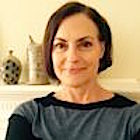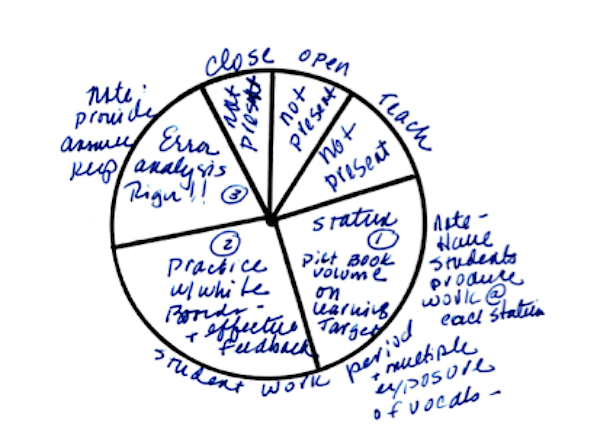Making Your Learning Walks More Meaningful

When I first starting teaching, administrators frequented our classrooms just twice in an entire year. One was an announced observation – that’s the day I wore my pearls. The second was technically unannounced, but we all knew it was coming.
Whichever teacher was visited/ambushed first would immediately send word out to everyone else, almost like a wildfire was approaching. “They are visiting classrooms today! Save Yourself!”

By the time the door opened, the dogs and ponies were warmed up and ready to perform.
Times have changed…somewhat.
Now, as a teacher turned consultant, I can report that today’s “Learning Walks” have served to open classroom doors more frequently and purposefully. Used not as evaluation but as a snapshot of how well instructional expectations and initiatives are being implemented, they can yield critical data for school improvement.
But no matter how many times the nonevaluative nature of these walks is reassured, the dogs and ponies still make their presence known. Sometimes, right when I walk into a room, it’s as if a movie director has just shouted, “Action!” Students sit up a little straighter and pretend that they all love learning about cell walls and vacuoles. The moment visitors exit, a collective sigh of relief ensues…and class returns to normal.
It’s stressful to have visitors. A lot can go wrong at a time when teachers want everything to be perfect. New instructional practices are being attempted with reliably unpredictable students. Now, people enter with clipboards or tablets and begin entering information. What are they writing? Is this awful? Am I going to be fired? (They say these are nonevaluative, but I’m not so sure of that.)
I’m typically in several hundred different classrooms every year with the purpose of providing teachers and administrators with feedback following professional development. The goal is to see how well learners are responding to the strategies practiced during our training. A true picture of the teaching and learning going on is essential.
 How to Make Learning Walks More Meaningful
How to Make Learning Walks More Meaningful
Here are some ideas to consider that have made my learning walks more productive and less prone to dog and pony shows. While this advice is phrased as suggestions to instructional coaches, principals, and, yes, professional learning consultants, there are valuable take-aways for teachers, too.
1. Reduce anxiety for teachers and learners.
Immediately thank the teacher for allowing everyone to come into his/her classroom. Remember that this is the students and teacher’s learning space and that we are visitors. Smile and express enthusiasm for this opportunity to see students’ work in progress.
Don’t plop down in the corner and immediately start writing. Set your stuff down and join in the learning. Encourage students to discuss their work. If the teacher begins passing out papers, offer assistance.
2. Maintain a clear and transparent purpose for walks.
My walks, for example, are to determine the impact of recent professional development on learning. The data I collect will be used as a snapshot of instructional trends across the building and perhaps the district. During the training, I detail to teachers the kinds of things I’ll be looking for when I visit their classroom. I also share this shocking, yet comforting, news: Anything that I write down you can read…probably before I leave the room.
3. Focus on the work of the learners and their progress toward the learning target.
Take pictures of student work as it develops. If there is no tangible student work to examine, jot that down. (It doesn’t mean they are not learning – but it’s not visible.) I try to schedule small breaks in my visits throughout the day.
During this time, I organize the pictures of student work by parts of the lesson and place them in a power point. By the end of the day, I am able to show solid evidence of what learning looked like on this day, from the openers, through the student work period, and in the closing minutes.
4. Consider if your collection tool is meeting your Learning Walk goals.
Rather than use a template, I draw pie charts for each learning episode. Why? Because pie charts provide for process, mission and time better than a checklist. Dynamic lessons come in all shapes and sizes; this format allows me to enjoy the lesson and diagram its construction without having to match my live observations with a standard template.
I draw the segments of the lesson on the pie chart. For example, if I arrive during the opener, that’s where those notes go. If the lesson is crafted by stations, I draw sections and detail what learners accomplished in each one. More importantly, I note the learning progress at the stations compared to the learning target.
An added bonus: a pie chart with scribbled notes doesn’t, in my experience, have that evaluative feel. These pies simply show the diagram of the lesson and how learners responded via their work. It’s so non-personal!
5. Provide feedback to teachers as quickly as possible.
At a minimum I express to teachers right then and there, in their learning space, something I truly appreciated about the lesson. It might be the rigor or high degree of engagement. I might also include a “One thing I thought of…” I often leave with, “What do you need from me?” Sometimes, a short gathering at the end of the day is ideal to share the pictures of student work and more detailed feedback from the walks.
6. Stay long enough to feel confident about your observations and findings.
I want to see transitions and how the lesson develops – how learners’ understandings deepen. If the visit lands during teach time, I try to stay until students begin working so that I can analyze their work and compared it to the learning target.
After your walks, pour over your notes
After the walks, an analysis of the pie charts and pictures ensues. I study the pie charts, notes and pics and make global recommendations. For example, after walking an elementary building all morning, there was a nagging concern. After pouring over my notes, it hit me.
Too much re-teaching was needed in the early part of the student work period. My recommendation: include a formative assessment right after teach time to uncover misconceptions. Correct the confusion as much as possible. Now begin student work.
Clarifying my vision and processes has made my walks more productive and collaborative. Dogs and ponies? Love ‘em. But not in the classroom. The desks are just not big enough.
_____________

She is also the founder of both Math in the Fast Lane (gr. 3-8) a hands-on approach to teaching math AND MyEdExpert.com, a place in which an array of educational authors share their resources. Before becoming an author and consultant, Suzy was coordinator of remedial education in the Cobb County (GA) Schools.





































Thank you! Your pie-chart idea is so easy to use and right! – non-evaluative.
Excellent article Suzy!